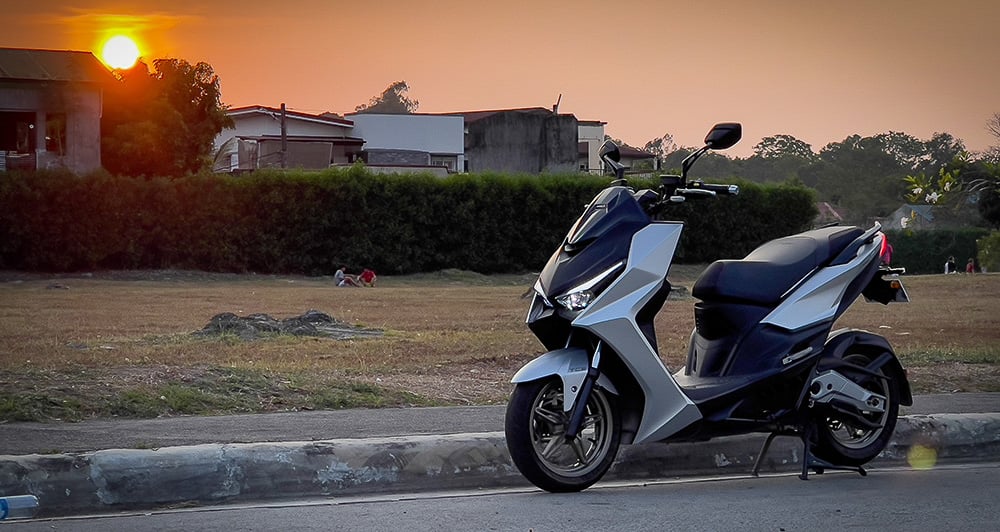
One day, our motorcycle editor asked me if I was free to take a scooter test unit. “Of course, kots,” I answered. Another day, another scooter for me, I guess. You must be sneering at my arrogance. How could someone be so apathetic about a task that every other rider would love to do?
But hear me out, dear readers. With over a hundred small-displacement scooters currently available in the market today, is there anything worth trying that is unique? I am longing for something that hits differently out of the box.
My indifference changed when the guys at Kymco Philippines handed me the key fob to this test unit.
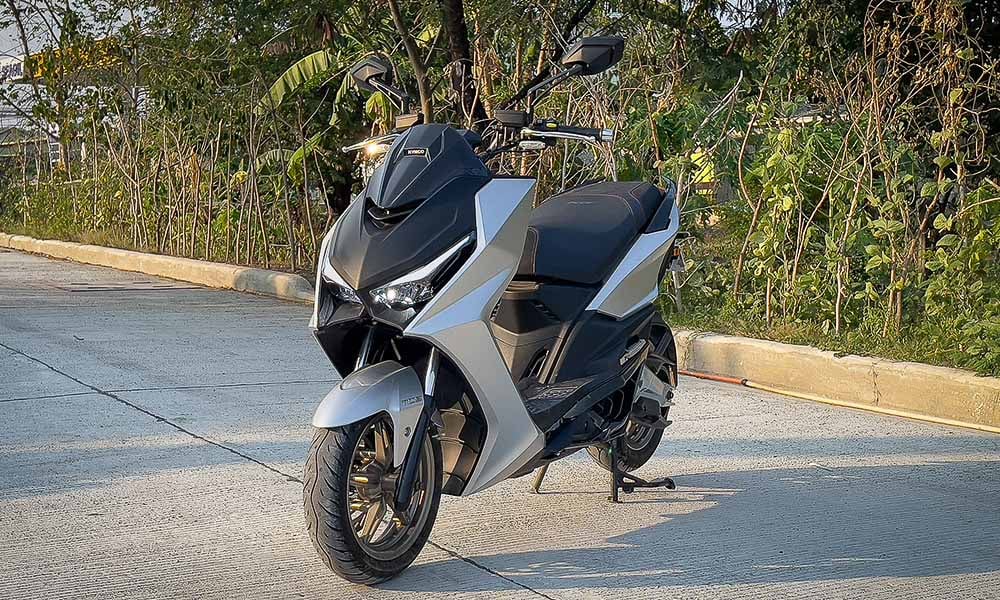
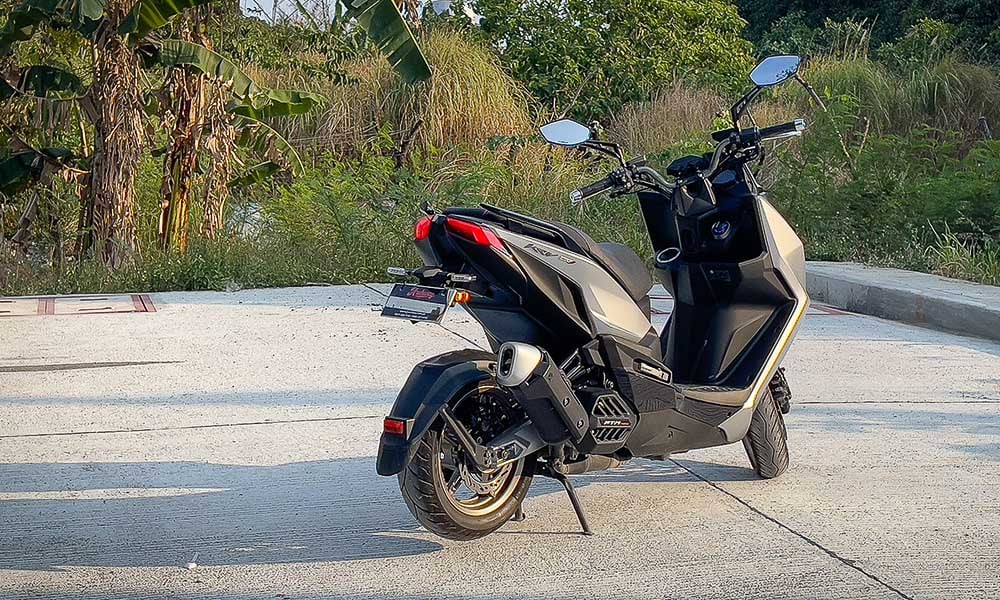
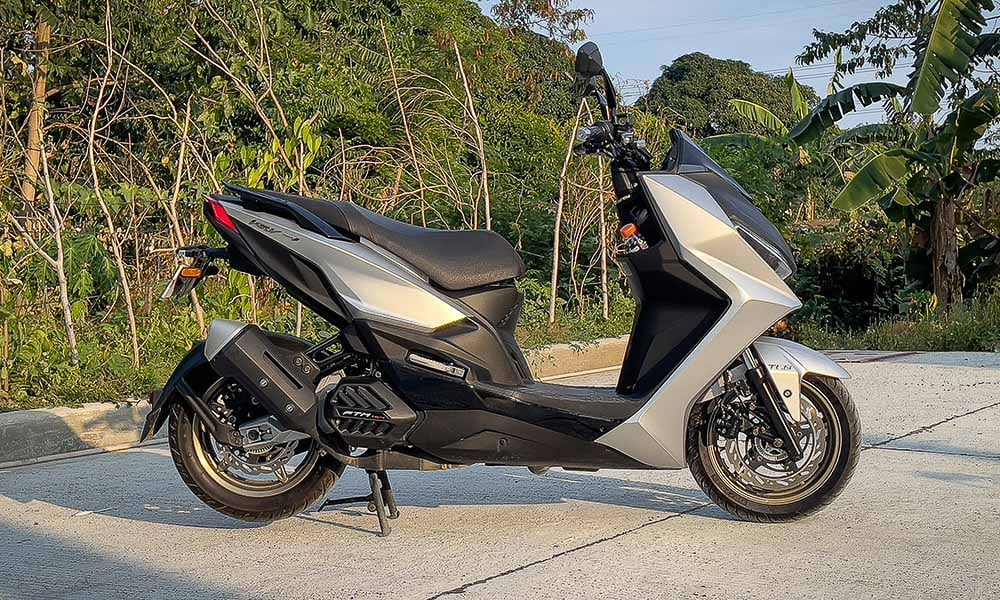
The keys that I got were for the Kymco KRV 180i TSC. I originally wasn’t so excited thinking that this was one of the ordinary scooters. But boy, was I in for a surprise.
The KRV is just like any other scooter out there, only bigger. Its dimensions (1,960mm long, 755mm wide, and 1,115mm tall) are like those of the Yamaha Mio Aerox and the Honda ADV160.
Up front and for most of the sides, it looks like a usual scooter, with sharp creases on its fairings, making it look more aggressive. But the lower part of the rear end was curiously different.
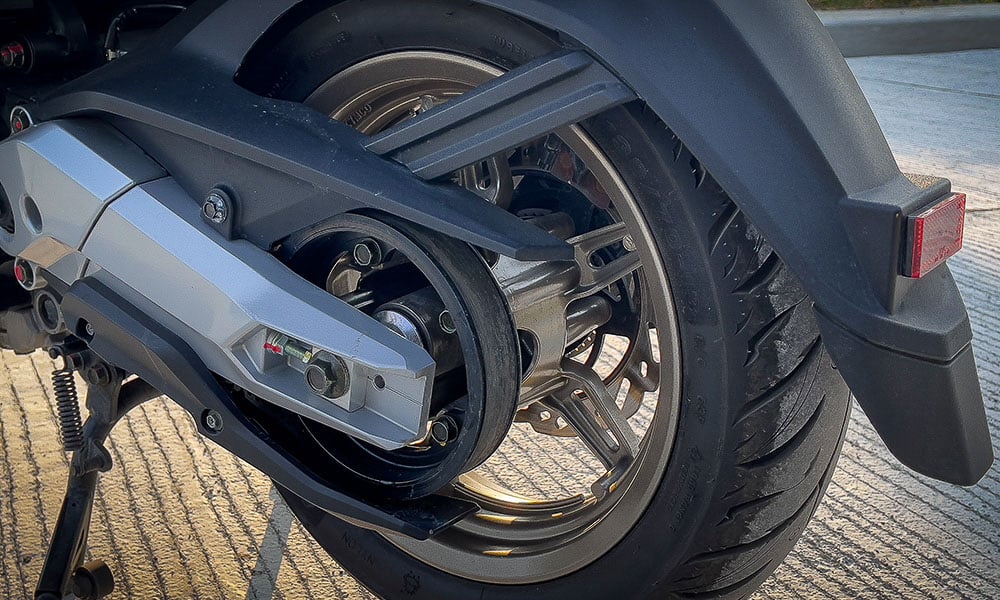
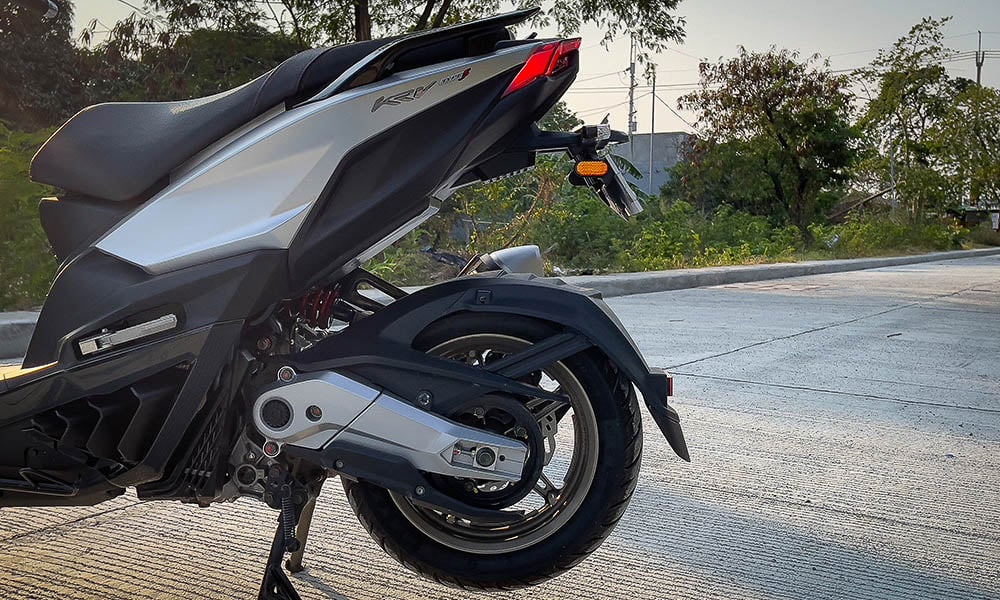
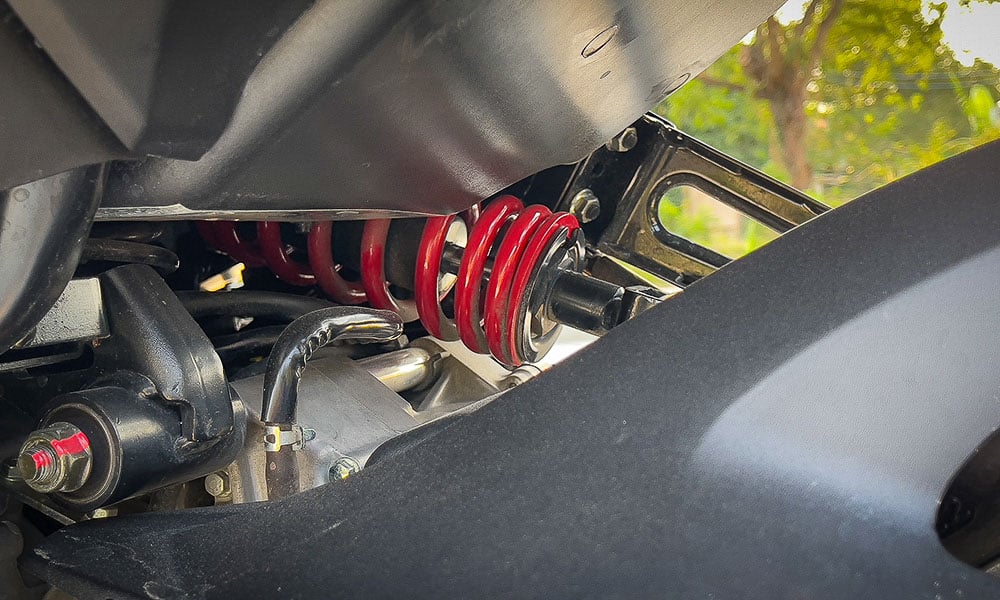
Instead of a crankcase serving as a part of the suspension swingarm mechanism, the KRV uses an independent, one-piece suspension arm—just like the ones you see on big sport bikes. This is linked to the frame with a monotube shock. The engine and the transmission are also installed further from the wheels.
Speaking of the powertrain, the motor on this one is the biggest of its perceived peers. At 175cc, the engine is the most powerful of that bunch, doing around 16.7hp and 15.68Nm. Looking at the spec sheet, it says the engine is paired expectedly with a CVT.
But the CVT is on the right side of the bike, instead of the usual mounting on the left. This is what Kymco calls the Power Transmission Matrix Suspension (PTM).
And since there is no crankcase directly connecting the CVT to the rear wheel, what we have here is an auxiliary drive belt. This gives the impression that the KRV is chain-driven. The suspension and drivetrain setup is the same one used in the much bigger AK maxi-scooter.
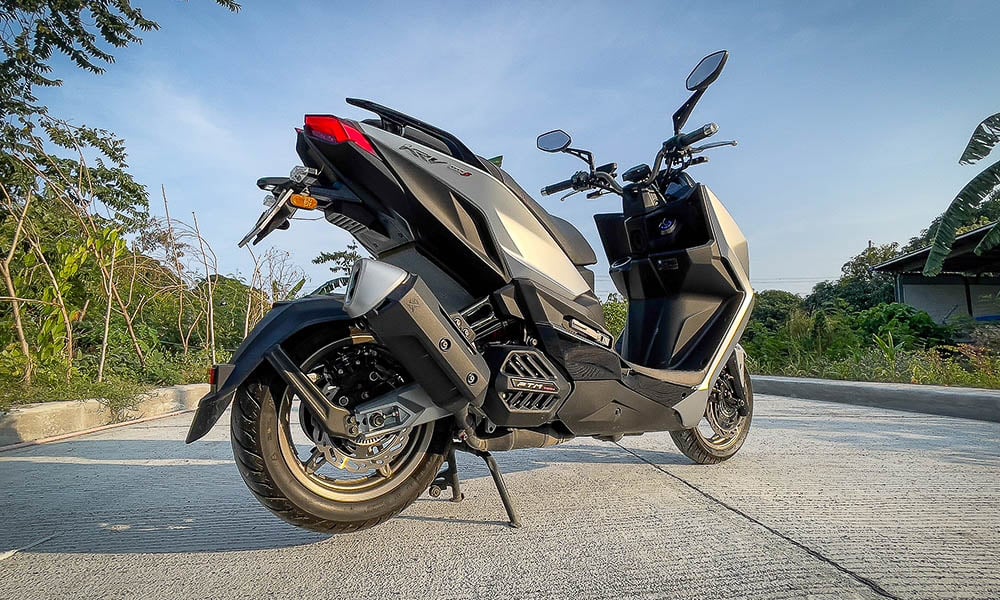
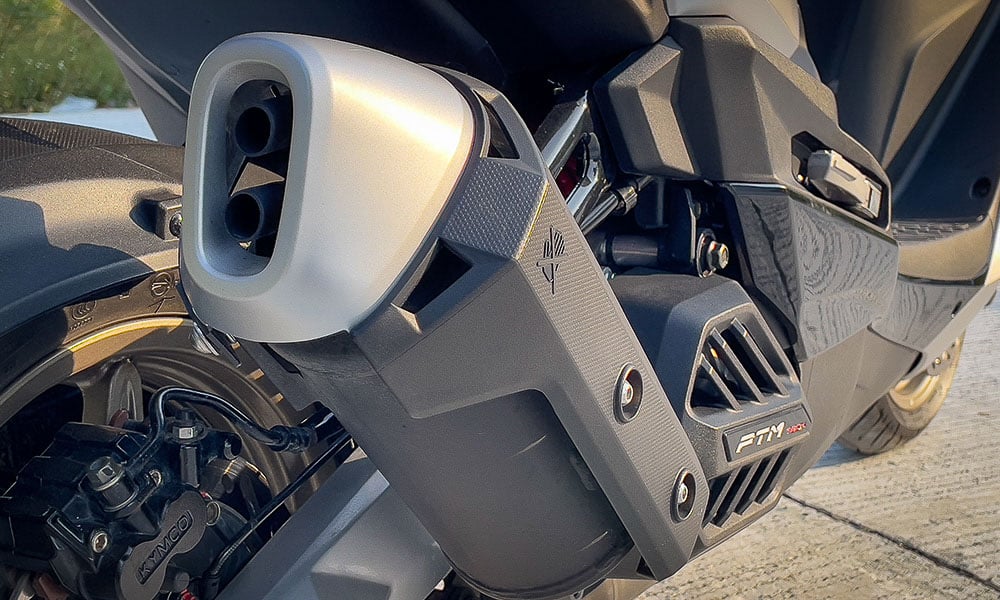
This unique drivetrain and rear suspension setup has its purpose. For one, it pushes the engine and the transmission further forward and into the center of the bike. The suspension mounting is also lower.
This helps ensure proper weight distribution, lower the unsprung weight, and move the center of gravity further from the rear wheels. This sounds like marketing-speak, I know, but believe me, it’s more than just that.
This becomes apparent the moment you start riding the KRV. At 795mm, the seat height is kind of high for me (I’m 5’6”). So I need to tip-toe a bit when riding it. But despite that, you’ll feel how nimble and willing the scooter is to go where it needs to.
The engine-and-CVT combo does have vibration issues at the lower end of the rev range. But once you’re up to speed, you’ll get rewarded with a linear yet very smooth power delivery.
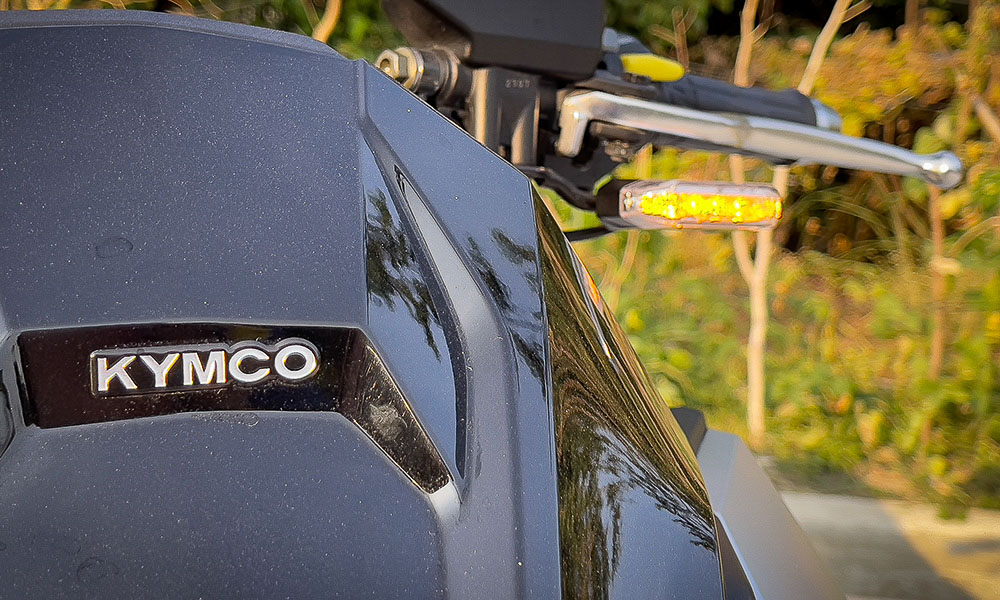
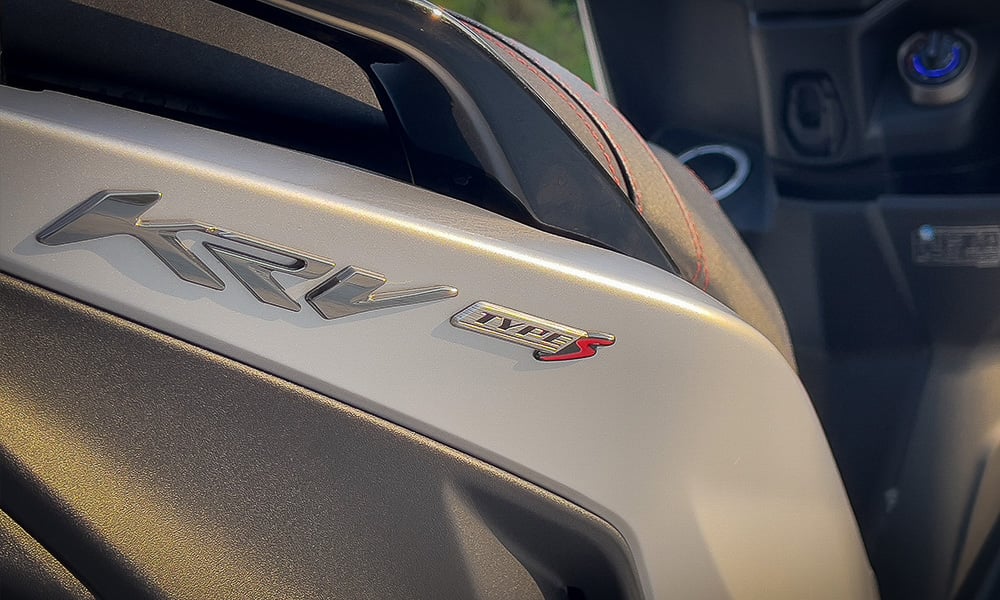
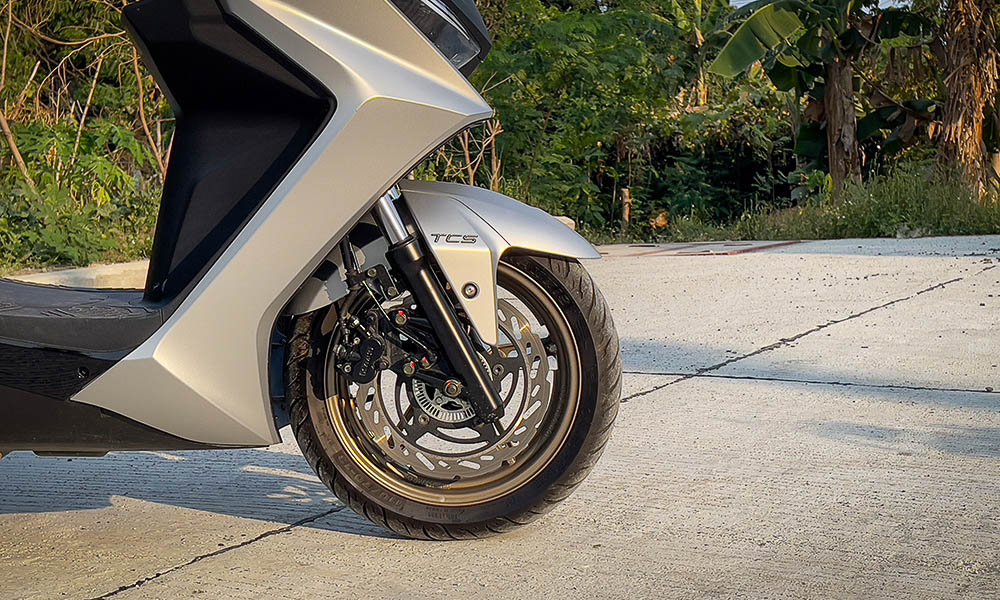
I tried launching the scooter on a patch of soft sand, and yet there was no twitching or sliding. The bike just pulled and pulled, without a hint of the traction control kicking in. On traffic stops, expect to be at the forefront of sprints even if you aren’t pushing that hard.
The bike just loves to rev and build up speed. Reassuringly, stopping power is equally impressive. With discs up front and at the back, coupled with an antilock brake system, they manage to put the KRV to a halt without much drama.
At every stop, I got questions about what the bike was or whether it was electric, thanks to its sharp styling and the drive belt on the rear wheel. The front compartment may not have doors to cover your belongings, but it is easily the biggest in the class, with enough room for a drinking bottle, your phone, and other items.
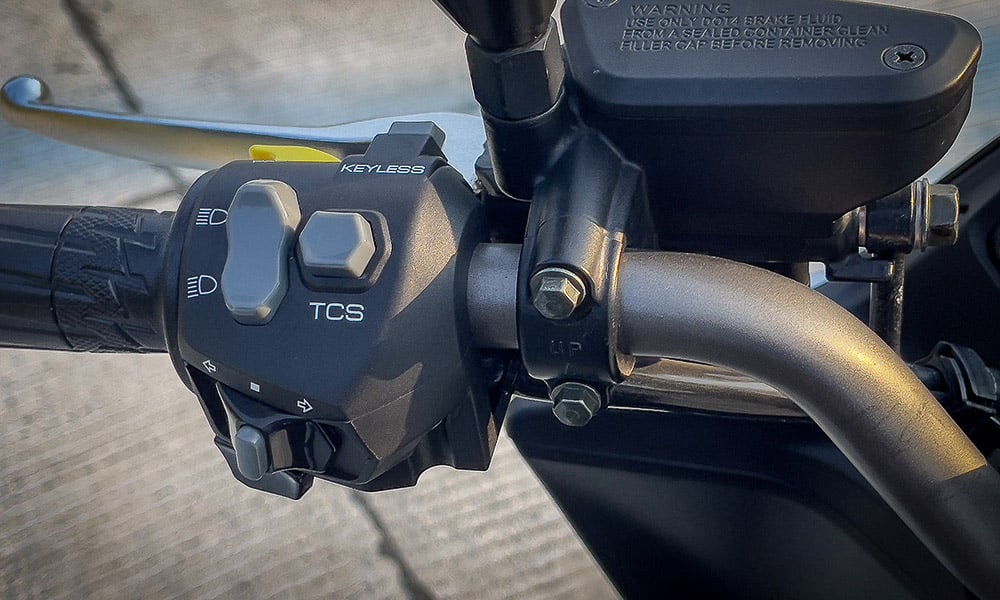
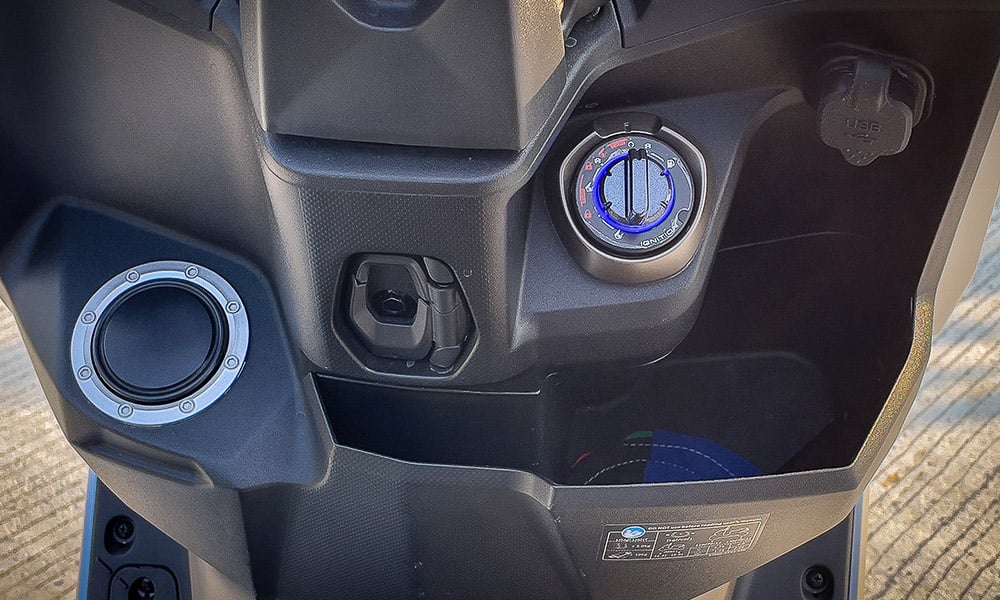
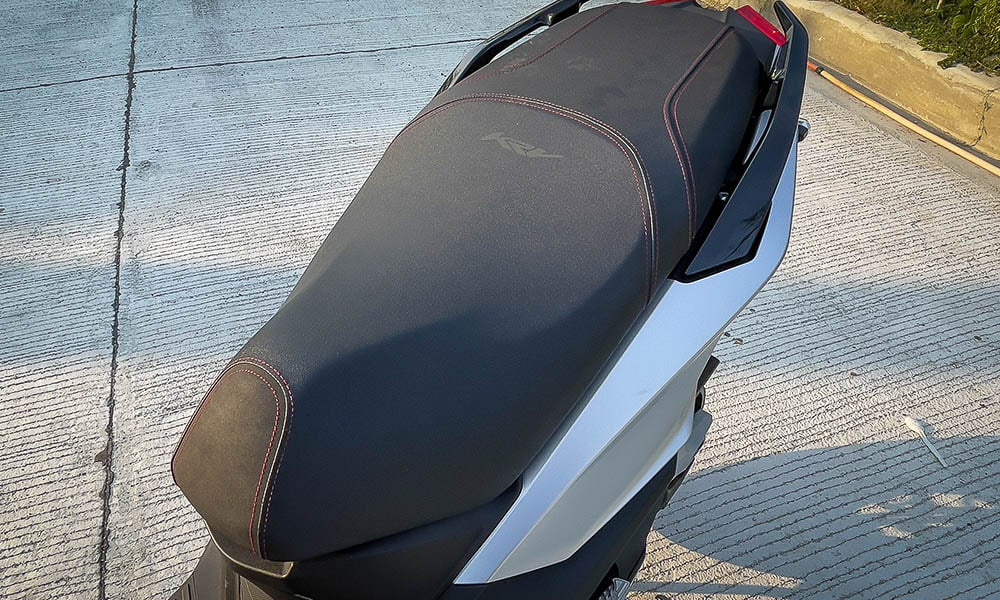
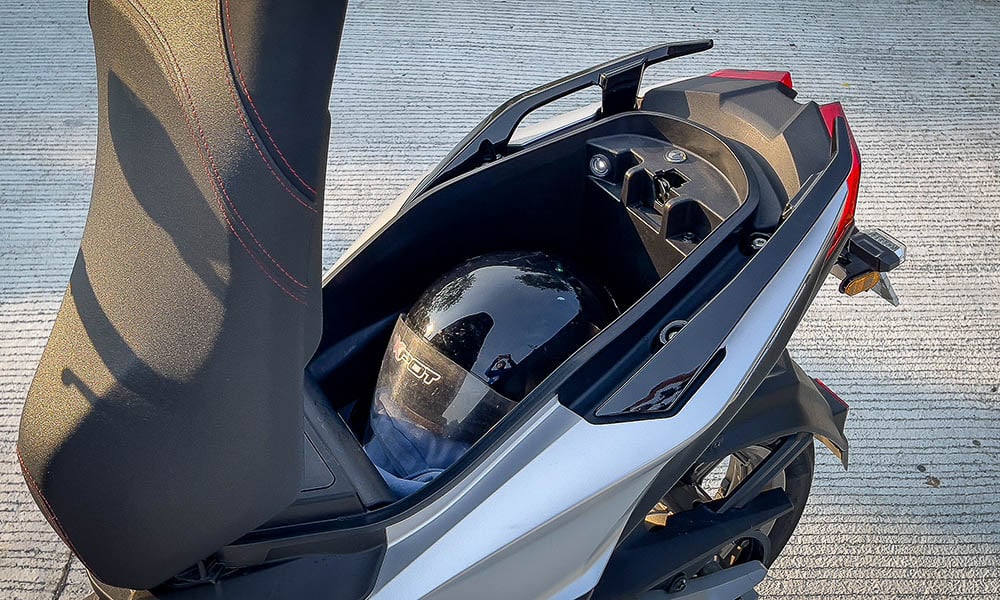
The dual USB-A charging ports can juice up more devices. And the cavernous underseat storage easily gobbles up a full-face helmet. It even has an LED lamp to illuminate your stuff in the dark. The all-LED lighting provides great illumination. I just find the sequential turn signals too gimmicky.
On the flip side, the Kymco KRV has its share of misses. For one, the LCD instrumentation does look good, but it can easily be drowned by the brightness of the sun. Its positioning doesn’t help as it is susceptible to glare. The absence of a front windscreen might make you feel how quick the bike is, but during longer rides, the wind hitting your face can get a little annoying.
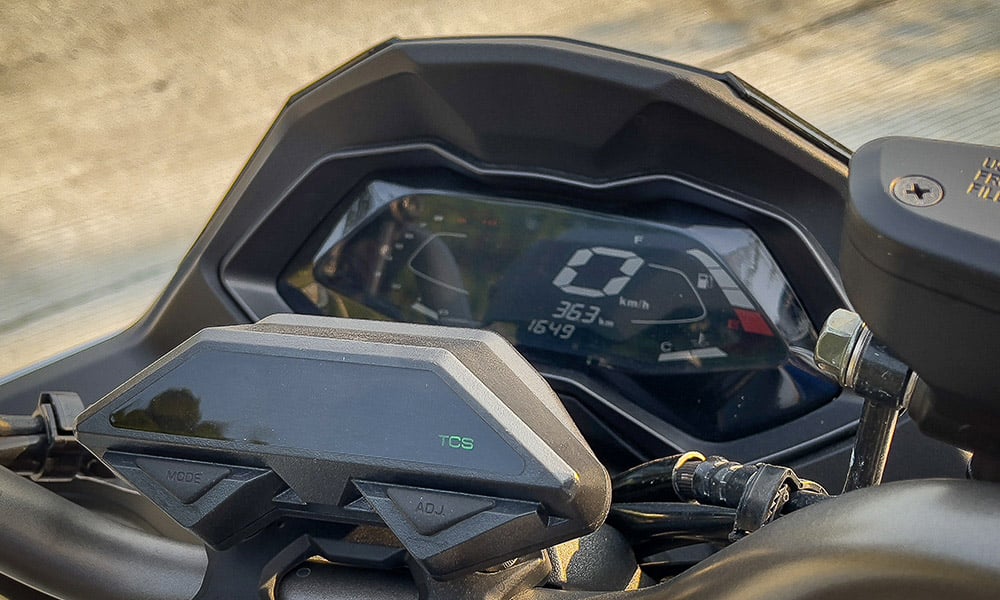
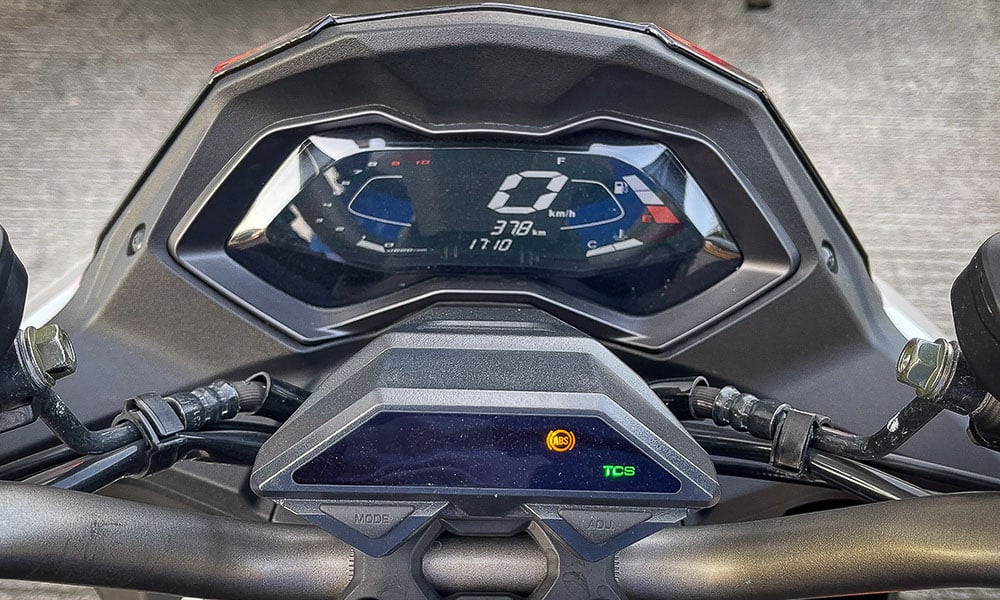
The vibrations of the powertrain may only be felt on the lower end of the rev range. But given how bad the traffic situation is on our roads, this can get a bit too tiring.
Also, the P189,900 sticker price may be too much for your wallet, even with the long list of standard equipment.
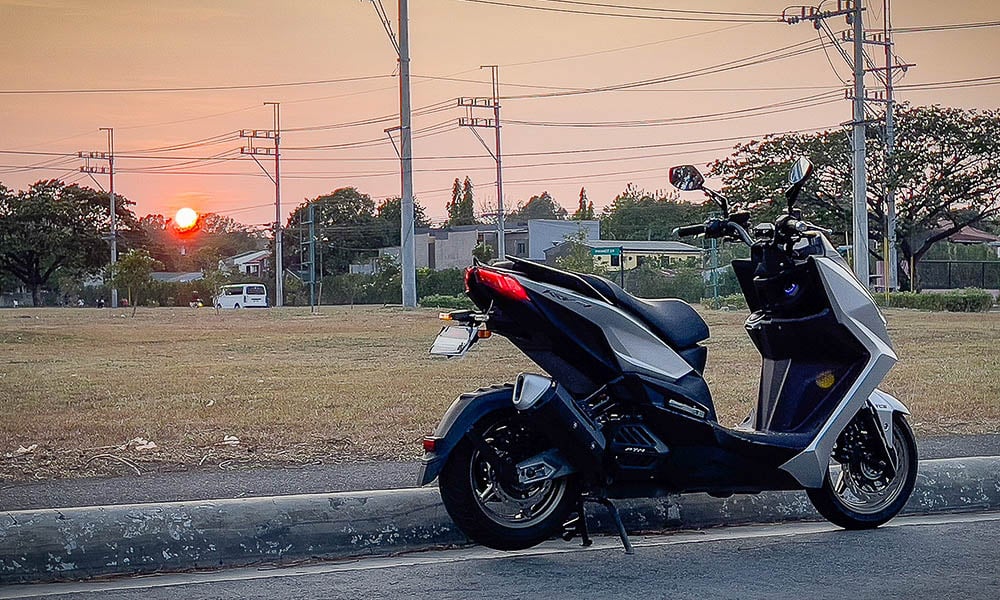
There’s a lower DDS variant at P168,800, but it loses some of the toys like the traction control and the ABS. But if you are willing to look past all of the shortcomings and the steep price tag, the Kymco KRV 180i is a great way to stand out.


0 Comments